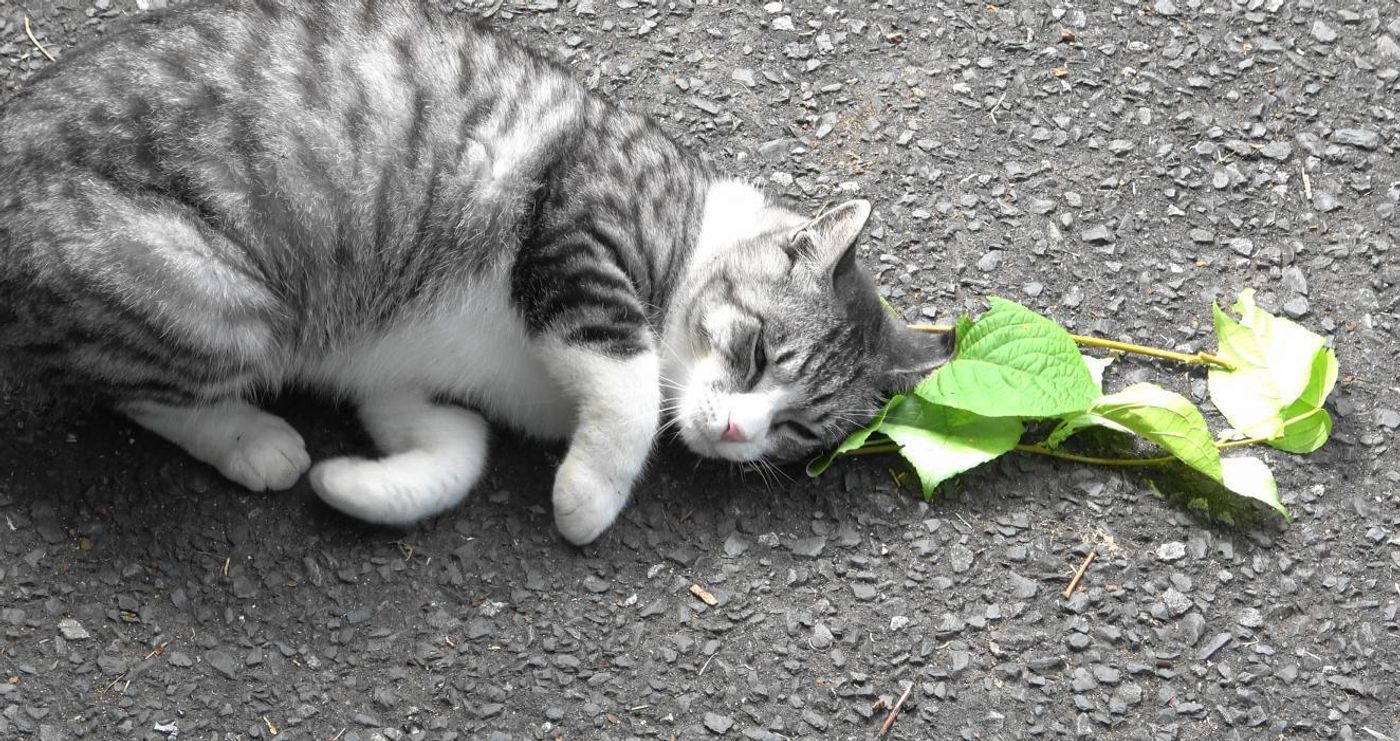A Practical Reason Why Cats Love Catnip
Cats love catnip and silver vine; the cat-attracting plants are treats that make cats excited and happy. Big cats also feel the effects of these plants. The active component in catnip has been shown to be nepetalactone, which is in a class of compounds called iridoids. These molecules also have an insect-repelling effect. Researchers have now learned more about the active compound in silver vine, which is very similar to catnip. The findings have been reported in Science Advances.
"The first appearance of silver vine ("Matatabi" in Japanese) as a cat attractant in literature in Japan dates back to more than 300 years ago. A folklore Ukiyo-e drawn in 1859 shows a group of mice trying to tempt some cats with a smell of silver vine. Still, benefits of the cats' response had remained unknown," noted one of the study leaders, Professor Masao Miyazaki of Iwate University.
In this work, the scientists tested various compounds that were isolated from silver vine leaves and determined that nepetalactol, which is a novel compound, caused playful behaviors that are similar to what's seen from catnip.
"We applied nepetalactol to laboratory paper filters and tested with eighteen laboratory and seventeen feral cats. They displayed the typical response to silver vine. We also tested the substance with larger, non-domestic cats (jaguar, Amur leopard, and Eurasian lynx); they showed a similar reaction. We concluded nepetalactol is responsible for the typical feline reaction to silver vine," said the first study author Reiko Uenoyama.
The researchers theorized that silver vine is mimicking a cat endorphin, and acting through the μ-opioid system, which has also been linked to euphoric effects in people. Indeed, their work revealed that exposure to silver vine raises endorphin levels in cats.
"We tested β-endorphin levels before and after [the] nepetalactol-induced response in cat blood. We found that silver vine activates the nervous system, [and] that is responsible for the euphorigenic reaction," said Miyazaki.
However, the researchers also knew that nepetalactone can have an insect-repelling effect, one that feline animals may have been taking advantage of for millions of years.
"On the basis of some reports that nepetalactone, the feline attractant in catnip, has mosquito repellent activity, we thought that the response allows cats to transfer plant's nepetalactol or nepetalactone on their fur for protection against mosquitoes. This led to a strong hypothesis when we found the mosquito repellent activity of nepetalactol," said Uenoyama.
When the researchers placed nepetalactol-coated papers around cat cages, they found that cats would rub their heads and faces on the papers no matter where the papers were located. But the cats only rolled on the papers when they were on the floor, and not on walls or the ceiling. The researchers suggested this shows that cats roll around on the nepetalactone primarily to transfer the substance to different parts of their fur.
"Next, we tested the mosquito repellent property of nepetalactol on cats. We counted the numbers of mosquitoes landing on cat heads with and without application of nepetalactol. The mosquitoes landed less on the nepetalactol heads. To see whether mosquitoes react the same in a more natural setting, we compared the mosquito reaction between cats that responded to silver vine leaves and nonresponsive cats. Mosquitoes avoided the responsive cats. From these results, we found that the cats' reaction to silver vine is chemical defense against mosquitoes, and perhaps against viruses and parasitic insects. This was the most significant finding of our study," Miyazaki explained.
The researchers still have more questions they want to follow up on. "Why is this reaction limited to cats? Why don't non-feline animals react to the plant? To find answers, we want to identify the gene responsible for the reaction. The findings of this study may be used in various applications, including [the] development of new mosquito repellant products."
Sources: AAAS/Eurekalert! via Iwate University, Science Advances









